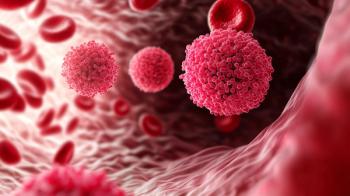
Overview of Burkitt Lymphoma, the Patient Populations Most Impacted
Adam Olszewski, MD, associate professor of medicine in Alpert Medical School at Brown University, discusses his SOHO 2021 conference presentation on prognostication and treatment of Burkitt lymphoma in the modern era.
Pharmacy Times interviewed Adam Olszewski, MD, associate professor of medicine in Alpert Medical School at Brown University, to discuss his SOHO 2021 conference presentation on prognostication and treatment of Burkitt lymphoma in the modern era.
Alana Hippensteele: What is Burkitt lymphoma and is there a patient population particularly affected by the disease?
Adam Olszewski: Thanks for having me. Burkitt lymphoma is a very interesting disease. It's a rare subtype of non-Hodgkin lymphoma that maybe for adults constitutes only 1% of all cases of non-Hodgkin lymphoma; it is probably more common in the pediatric population. I’m an adult hematologist, so I treat mostly adults.
It is considered to be the fastest growing human cancer and the main characteristic of these diseases is probably that it is a composed of very rapidly dividing cells, of which essentially 100% are undergoing division at any point in time. It is famous for a doubling in volume, sometimes within 24 hours.
This is not universal; there are some cases which curiously grow slower, but it's challenging for oncologists because of the rapidity of its growth, with rapid spread to nodal and extranodal organs and the intensity of treatment that is required to cure it.
Another peculiar thing about Burkitt lymphoma is it is consider a highly curable disease. As long as the treatment is executed expertly and expeditiously, the general belief is that patients should be cured.
It is interestingly affecting younger patients compared to maybe other aggressive B-cell lymphomas, like diffuse large B-cell or high grade B-cell lymphoma, in which the median age is in the 40s, there's a lot of pediatric patients. We also know that there are 3 sub categories or variants of Burkitt lymphoma which somewhat related to the risk factors for it, so that it was called endemic Burkitt lymphoma, which is associated with the Epstein-Barr virus infection, and this variant predominates in the equatorial strip in Africa, Papua New Guinea, and other areas geographically.
Then there's the immunodeficiency-associated variant, which in western countries is mostly observed in patients who have HIV infection, so that's a major risk factor, and probably, at this point, it’s one of the most common lymphomas that are diagnosed among patients with the HIV infection. It characteristically is diagnosed in patients who have fairly good control of their infection, with good CD4 counts, sometimes undetectable viral load.
Then, the large majority of patients in the United States are patients with sporadic Burkitt lymphoma, which kind of happens randomly.
Newsletter
Stay informed on drug updates, treatment guidelines, and pharmacy practice trends—subscribe to Pharmacy Times for weekly clinical insights.



















































































































































































































